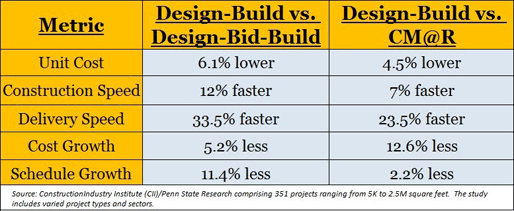by Richard Thomas | September 24, 2013
I recently flew to Atlanta to attend the National Conference of State Legislatures, an annual event with state representatives and their staff discussing key issues in their states. In the midst of this conference, I connected with Representative Walt Leger, Speaker Pro Tempore of the Louisiana House of Representatives. We spoke about the task force Louisiana recently created to study design-build, and we swiftly set a date for me to fly to Baton Rouge to testify.
Louisiana first authorized design-build project delivery after Hurricane Katrina devastated the city of New Orleans. Like many states’ first design-build laws, the authorization would expire after a certain amount of time, and would have to be renewed. This year was the first time that renewal faced serious opposition, and DBIA rallied all of our resources to ensure design-build authority could continue in the state of Louisiana. As a compromise to ensure support for extension, Senator Robert Adley proposed creating a task force to study the use of design-build by public entities. This is the task force I was asked to appear before and offer testimony.
The main focus of my testimony highlighted the reasons owners choose to use design-build. The primary reason, of course, is when a project is urgent. I discussed how governments often turn to design-build after disasters, including Louisiana after Katrina, Minnesota when the I-35W Bridge collapsed and New York following Hurricane Irene. I also discussed some of the following research that’s already been done around design-build in comparison to other delivery methods:
The task force was impressed with the research and the examples I provided, but I wanted to be sure they knew why it was important to keep design-build authorization in place for the future. As the task force certainly knew, hurricanes are not uncommon in the Gulf of Mexico, so it makes sense to ensure this delivery method is available for whenever disaster strikes. Just as importantly, I pointed out the industry trends in project delivery. The use of design-build is growing – recently hitting 40 percent of the non-residential market – and federal agencies such as the Army Corps of Engineers, the Navy, and the Department of Justice are now using design-build for more than 75 percent of their projects. Furthermore, allowing design-build authorization to expire would put Louisiana behind other Gulf States, such as Texas and Florida, which have authorized design-build for all types of design and construction.
I was warned that one Representative would treat this with skepticism, but I knew whatever argument he made would be based in a myth we had debunked before. He tried to argue that local governments would be unable to execute design-build contracts, and that small projects (like schools) were all built the same anyway, so a comprehensive design-build law is unnecessary. I explained that small projects were built in many different ways, and that the speed at which many New Orleans schools were repaired after Katrina was because of design-build. Also, nearly half of all design-build laws enacted over the past three years were authorizing local governments to use design-build.
Following DBIA’s testimony was a wave of support for design-build. Representative Karen Gaudet St. Germain gave passionate testimony in favor of design-build, and our other allies in the legislature thanked me for DBIA’s presentation. Our biggest show of support came when the state’s Department of Transportation (DOT) testified after me. They testified that design-build gave them a valuable tool to deliver their projects, and emphasized that its value goes beyond speed as it allows for greater innovation, alternative technical concepts and increases the chances they’ll receive federal funding. The DOT also stated that they learned best practices through DBIA’s classes and conferences, making DBIA a valuable resource.
I left Louisiana knowing DBIA had new allies in the state and that momentum was on our side. Louisiana’s challenge will be drafting a standardized design-build law that can apply statewide to all agencies, while taking into consideration the lack of design-build experience in some areas. Thankfully, we know that if a comprehensive bill passes, the Louisiana DOT can direct other agencies to DBIA since we are the only organization defining, teaching and promoting best practices in design-build. DBIA staff is definitely keeping an eye on this taskforce, and will keep you updated as this develops.

